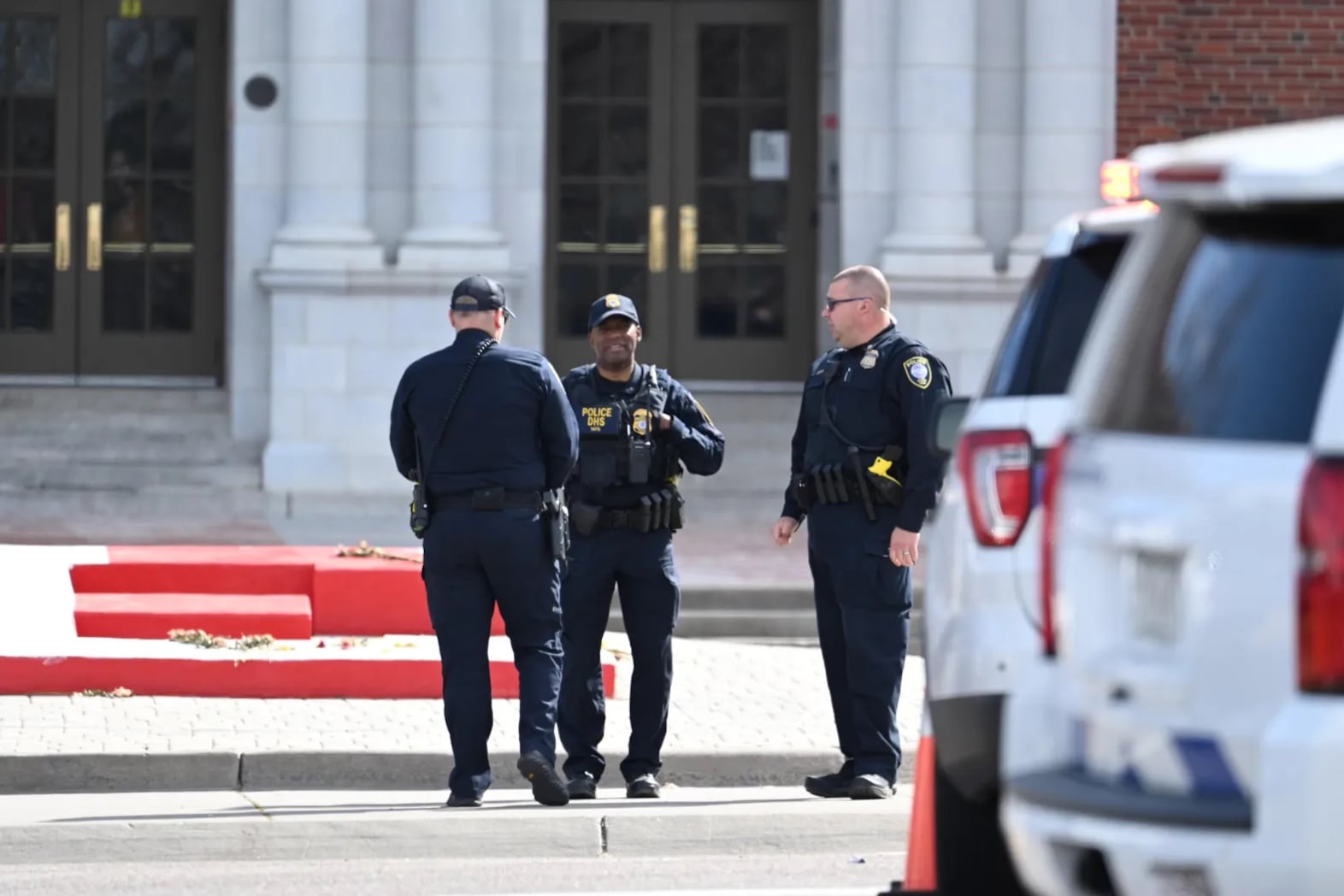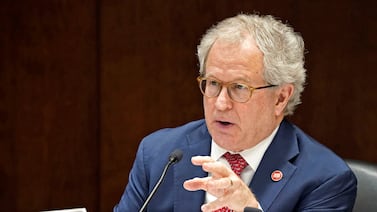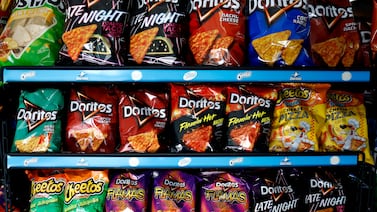Thirteen Denver high school campuses will have at least one police officer stationed on campus next week when students return from spring break, a police department spokesperson confirmed Friday.
That’s well short of the number spelled out in the Denver school board’s recent direction to put as many as two police officers at all high schools for the remainder of the school year. That directive was issued after a March 22 shooting at East High School in which a student shot and injured two deans.
The following day, the school board suspended its 2020 policy banning police known as school resource officers, or SROs, from Denver schools.
When classes resume Tuesday, two SROs will be at East High, the district’s largest school with 2,500 students. Another 12 high school campuses will have one officer each, adding up to a total of 14 SROs, according to the police department.
The campuses, in order of student enrollment, are:
- Evie Dennis Campus, which has five schools, including DSST: Green Valley Ranch high school, and which serves a total of nearly 2,000 students in the five schools
- Northfield High, 1,870 students
- South High, 1,840 students
- North High, 1,600 students
- Thomas Jefferson High, 1,320 students
- George Washington High, 1,265 students
- Montbello High, 1,100 students
- Dr. Martin Luther King, Jr. Early College, 1,050 students
- Abraham Lincoln High, 980 students
- John F. Kennedy High, 790 students
- West High, 640 students
- Manual High, 320 students
Eight of the 14 officers previously worked as SROs in Denver, though not all of them had that assignment in 2020 when the school board voted to remove police from schools, said Denver Police Department spokesman Doug Schepman. The SROs were phased out of Denver schools over a year, with the last officers leaving their posts in June 2021.
But youth violence has been on the rise this year. A 16-year-old East High student, Luis Garcia, died of his injuries after being shot in February while sitting in his car outside the school.
Police plan and board memo differ
The plan for 14 SROs falls short of what the school board directed on March 23, one day after the East High shooting.
In a memorandum, the board directed Superintendent Alex Marrero to work with Denver Mayor Michael Hancock to “offer and externally fund as many as two armed police officers and as many as two additional mental health professionals” at all Denver high schools for the remainder of the school year, which is set to end in early June.
Denver Public Schools has more than 50 high schools. Twenty are independent charter schools governed by their own boards of directors. Several are small schools for students who’ve struggled at other schools or are at risk of dropping out.
School board President Xóchitl “Sochi” Gaytán said she couldn’t comment on the discrepancy between the board’s order and what will happen next week. This week is spring break for DPS, and Gaytán said via text message that “there’s no board work happening right now.”
It’s also not clear if high schools will have two additional mental health professionals next week, as ordered by the board in its memorandum. School district spokesman Scott Pribble said he couldn’t answer that question because district staff are out of the office for spring break.
SROs will have same duties as before
Pribble did, however, send a statement attributed to Marrero about police in schools.
“I am not worried about the city of Denver and the Denver Police Department’s willingness and ability to provide SROs in our comprehensive high schools once students return from spring break,” it says. “I have been given assurances by Mayor Hancock and [Police] Chief [Ron] Thomas that they will be able to support the safety of our scholars for the remainder of this year and I look forward to continued discussions to allow our students to be safe in our schools.”
The police department is paying the full cost of stationing officers inside schools, said spokesman Schepman. That’s different from the previous arrangement in which DPS and the police department split the cost of SROs. In the 2019-20 school year, DPS paid $720,000 for half the cost of 18 SROs stationed at certain middle and high schools.
The 14 SROs who will be stationed at schools next week will follow the same guidelines and perform the same duties as SROs did in 2020, Schepman said. In the past, DPS and the police department had an intergovernmental agreement detailing those duties.
The agreement for the 2018-19 school year says SROs should differentiate between disciplinary and criminal issues and respond appropriately, and de-escalate incidents whenever possible.
Schepman said that while reassigning 14 officers to be SROs “does pull officers away from typical patrol duties, the department is constantly adjusting the deployment of resources based on data, trends and needs, and adjusting to having SROs in schools is no different.”
Focus on deliberations, not plan
Much of the chatter this week has been about the behind-the-scenes deliberations of the school board in deciding whether to return police to schools, not on the details of the plan to do so.
On Monday, school board Vice President Auon’tai Anderson held a press conference in which he implied the board’s hand was forced by the mayor.
Anderson said Marrero told him and Gaytán before a closed-door executive session on March 23 that Hancock “had an executive order ready to be drafted and declare a public health emergency … to deploy school resource officers back to schools.”
“The decision that you saw was one, responding to the moment, but also preserving the institution of the school board,” Anderson said. “We cannot be a school district where the mayor of Denver is signing executive orders to overhaul our duly elected school board.”
Hancock’s office has denied that the mayor had an executive order ready to go. But The Denver Post reported Thursday that Marrero confirmed that he and Hancock discussed an executive order to put police back in schools following the East shooting.
Two days after Anderson’s press conference, board President Gaytán wrote Anderson a memo alleging he’d violated board policy by divulging information told to the board in its March 23 executive session, among other allegations, according to a copy of the memo obtained by Chalkbeat. Discussions during executive sessions are meant to be confidential.
“Specifically, naming the Mayor’s private communication with the Superintendent regarding the creation of an Executive Order to address school safety,” the memo alleges.
The memo says the school district’s attorney will review the allegations and advise on which ones to move forward for a public discussion among board members. Anderson was previously censured by the board in 2021 for violating expectations of board member behavior after an investigation found he’d had flirtatious contact with students on social media.
Melanie Asmar is a senior reporter for Chalkbeat Colorado, covering Denver Public Schools. Contact Melanie at masmar@chalkbeat.org.





